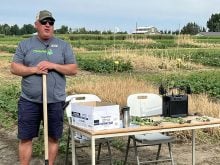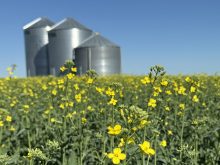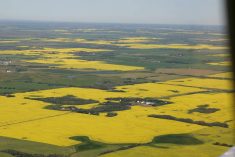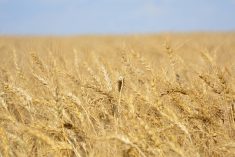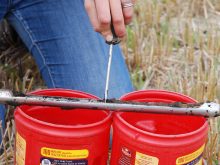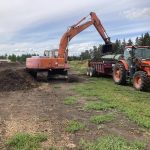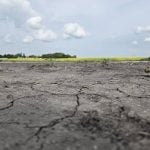Alberta researchers are evaluating dust emissions from feedlots to provide a scientific basis for management practices to reduce them and their potential effects.
The two-year study slated for completion next spring is conducted by Alberta Agriculture, the Alberta Research Council and Agriculture Canada’s Lethbridge Research Centre. It is measuring and analyzing emissions of particulate matter, or PM, from Alberta feedlots. Many industrial and other activities contribute to overall PM levels and studies have shown that increasing levels carry with them an increased risk to health.
“Particulate matter has become one of today’s most important environmental issues and it encompasses many industries,” said Kris Chawla of Alberta Agriculture.
Read Also

AI expected to make itself felt in food systems
Artificial intelligence is already transforming the food we eat, how farmers produce it and how it reaches the consumer, experts say
“It’s recognized that feedlots and other agricultural operations contribute to the amount of airborne PM, but in order to evaluate the potential risk of those emissions and develop reduction strategies, a need exists for a sound, scientific understanding of their precise contribution.”
He said Canada’s environment ministers are developing standards for particulate matter and ozone. Many Alberta stakeholder groups are involved in the development of strategies to meet their needs in managing the ambient PM level.
The feedlot study aims to determine the characteristics of PM emitted from various areas of feedlots, including feed bunks, holding pens and gravel roads, due to animal or vehicle movement, and how that PM is dispersed in surrounding areas.
“Information and recommendations generated from our project will help others evaluate the exposure risk to humans and animals associated with feedlot activities,” Chawla said.”This will help the industry to implement good management practices for emissions associated with specific types of operations, and evaluate the effect on the surrounding area.”
Researchers have collected fine and coarse dust emission samples from two feedlots in southern Alberta to study chemical and biological characteristics.
Chawla said analysis is expected to be completed by March. Researchers will then develop recommendations for feedlot operators.
“For example, if we find that 60 percent of the PM on a feedlot is from a gravel road, we can suggest producers keep their gravel roads moist to reduce the amount of dust that gets airborne. Also, by determining the specific composition of dust emissions, we’ll be able to tell producers which compounds should be their biggest concern.”
A key part of the study will be to determine the transport and dispersion of the PM in ambient air, Chawla said.





